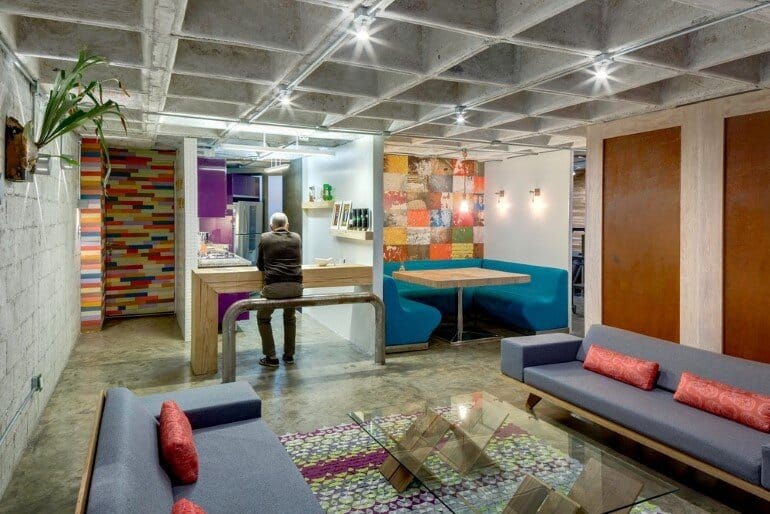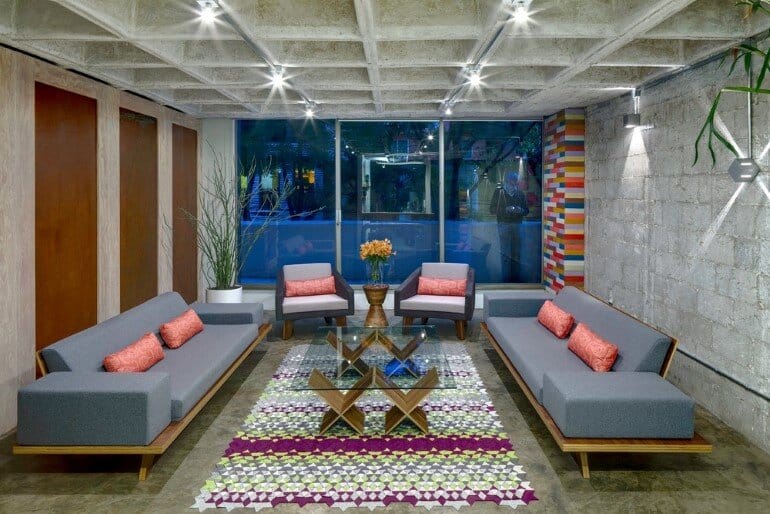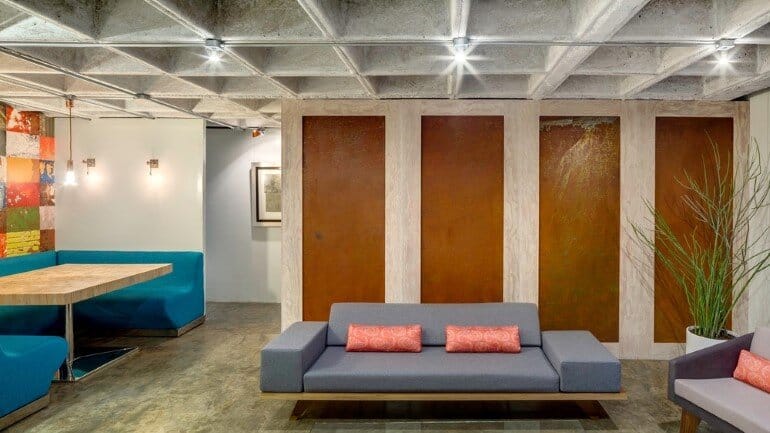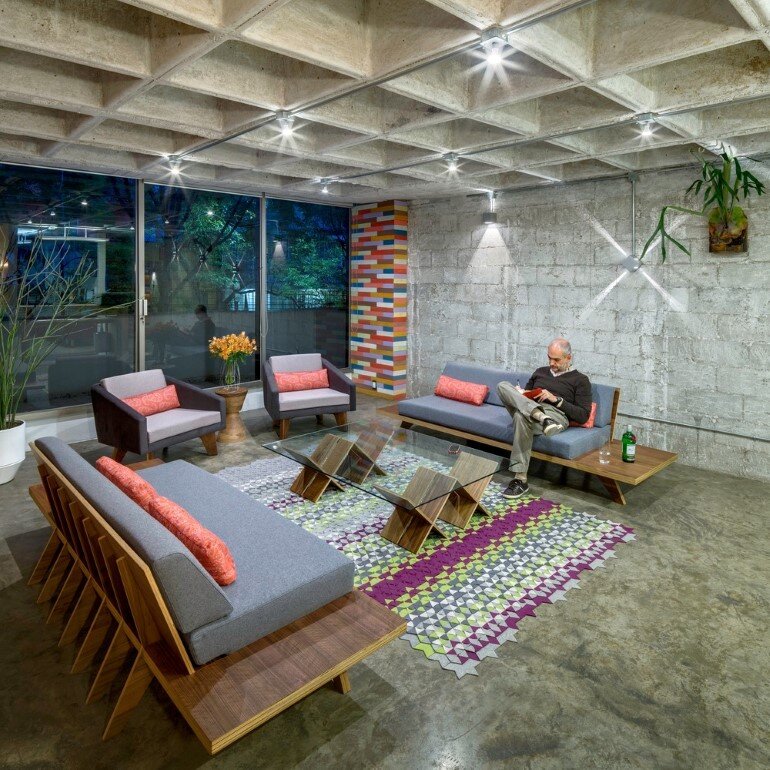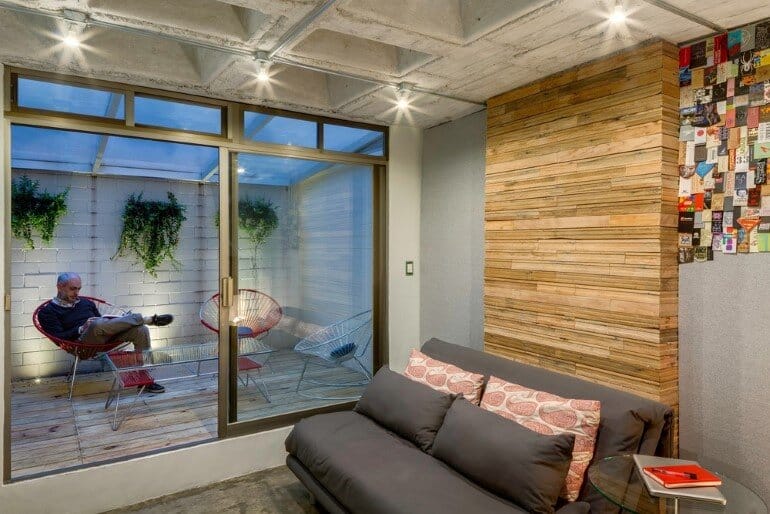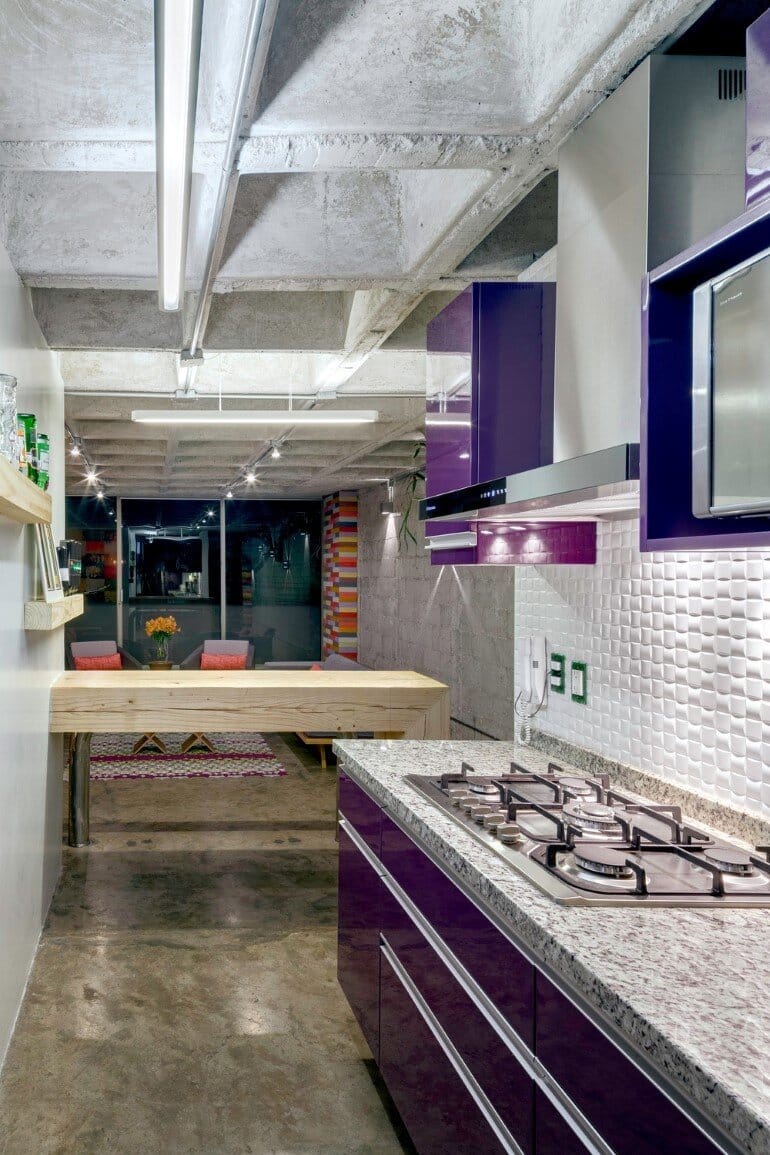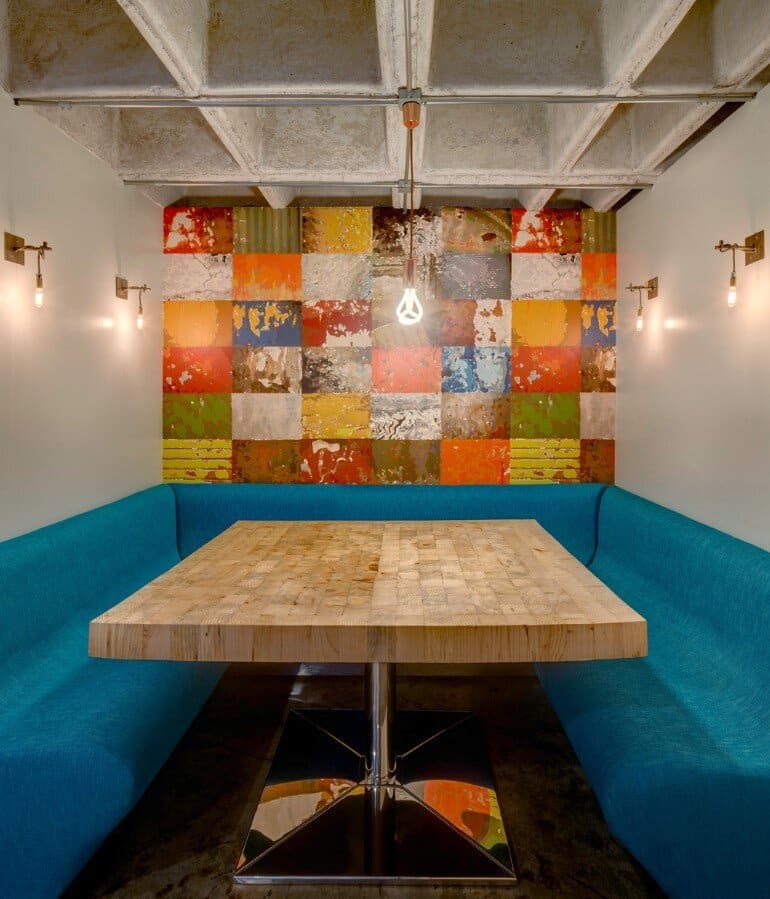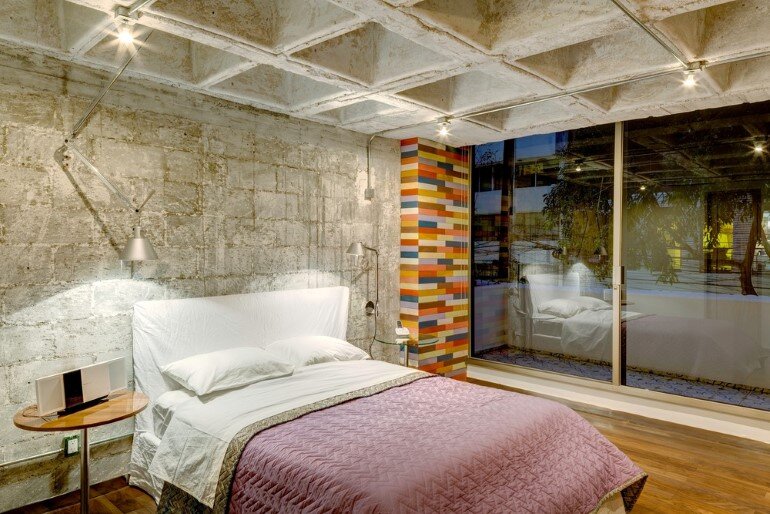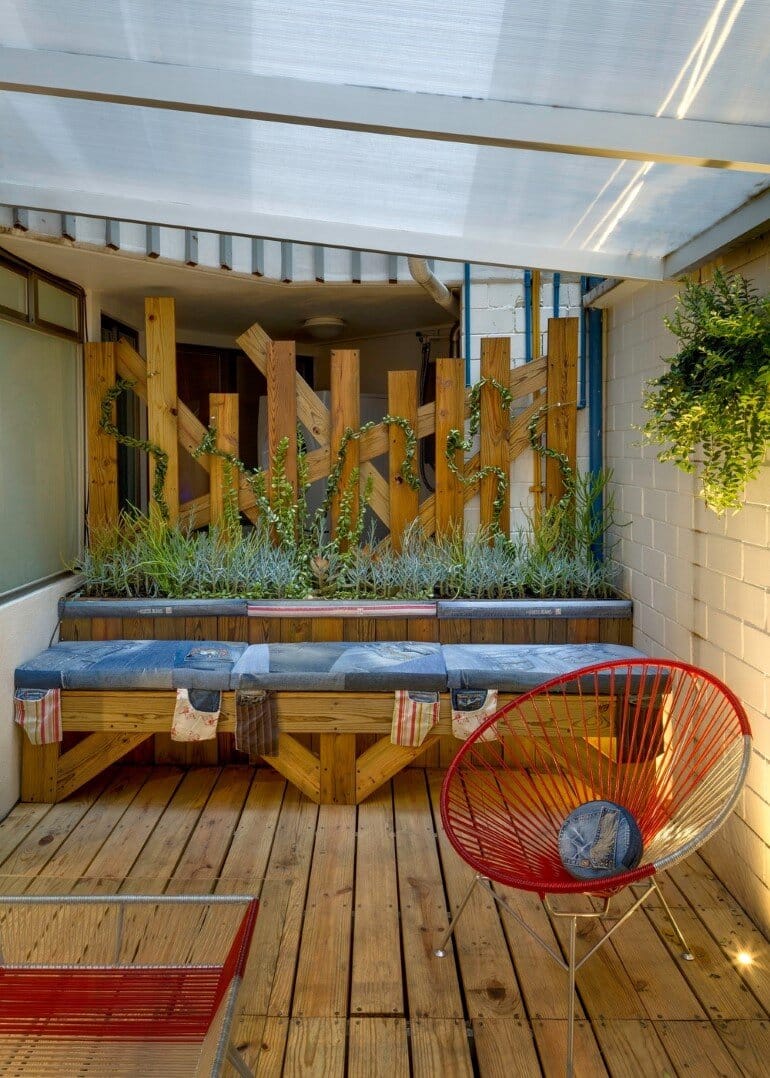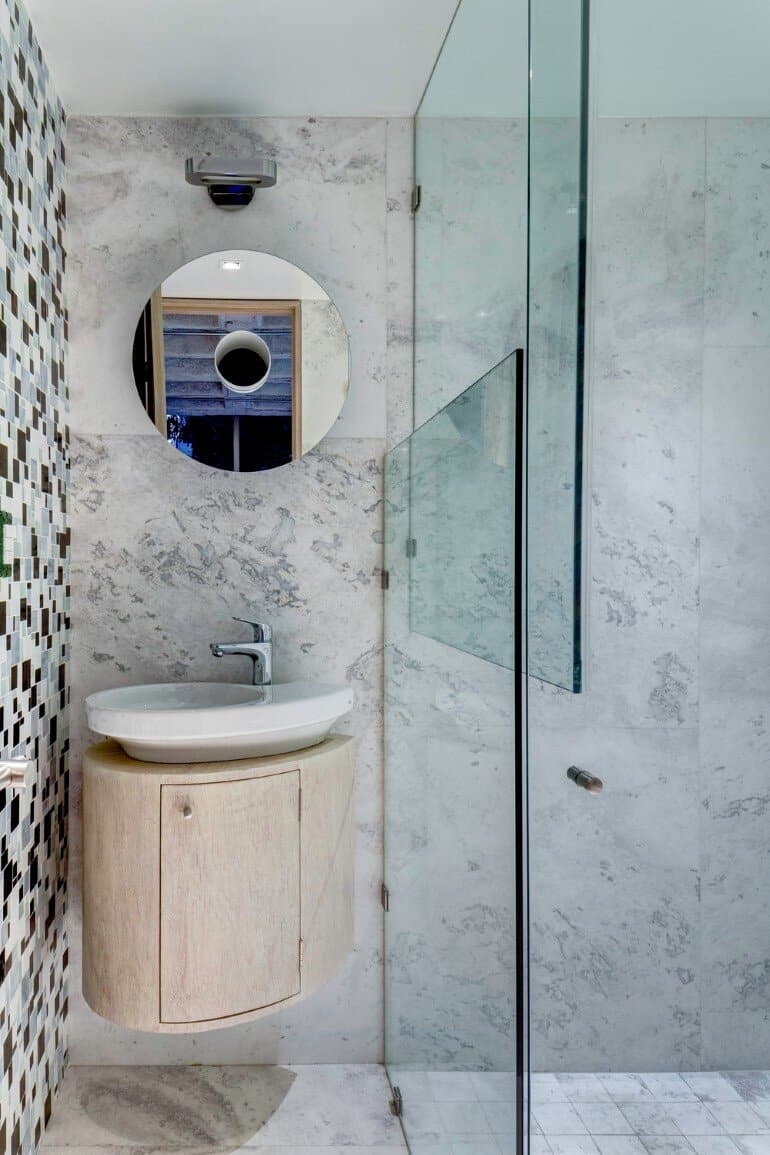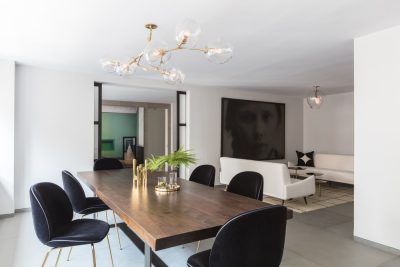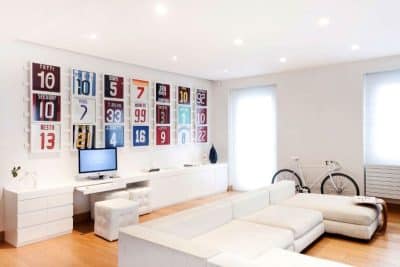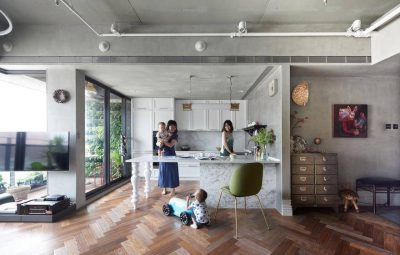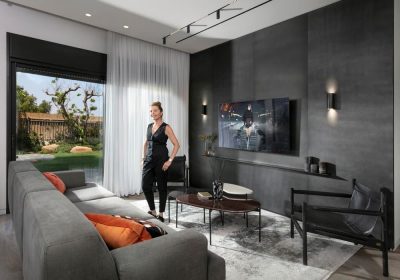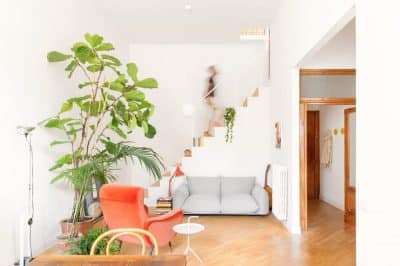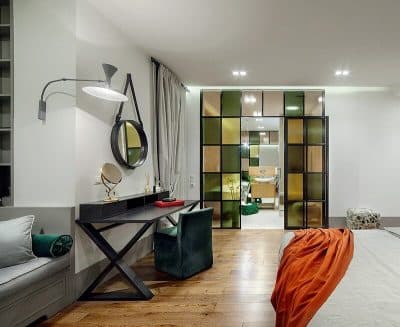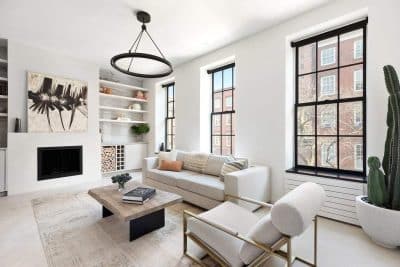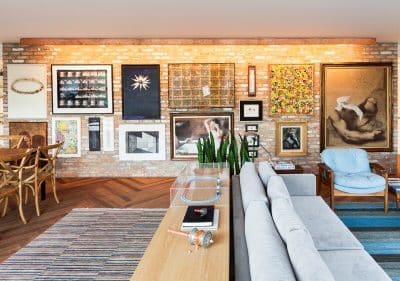Project: Traditional Apartment Converted into a Studio
Architects: Arqmov Workshop
Location: Mexico City, Mexico
Photography: Rafael Gamo
This traditional apartment in Mexico City has been adapted to the modern lifestyle of a young owner. The project was designed and completed by Arqmov Workshop.
The refurbishment of the Hegel Street apartment in Polanco, Mexico City, started with the idea that interior design should faithfully reflect the user’s lifestyle. In this way, an elderly lady’s apartment was adapted to suit the requirements of its heir — a young, single graphic designer, the client of this project.
The removal of old carpets, wall finishes, and drop ceilings uncovered perfectly polished concrete floors, which were sealed and left exposed in the common areas. Similarly, the exposure of the existing waffle slab added 30 cm to the height of the rooms, plus the depth of the coffers themselves. This slab was prepared so as to remain exposed, and the new electrical wiring was left visible on the underside of the concrete grid.
Efficient redistribution of the space through carefully planned design turned a traditional apartment into a functional studio/living space. Old service areas were converted into new bathrooms, a breakfast nook, and storage space. A polycarbonate-roofed conservatory was built in what it had been an unused, dusty room prior to the refurbishment. An extra bedroom and an open kitchen complete the program.
The recycling of construction materials was of paramount importance for this project, and several different strategies were developed to effect this. Discarded materials were collected from demolition sites; for instance, wooden floorboards were selected from an old building in the Colonia Condesa, painted with different colors and used to dress columns whose condition required a new finish.
For the wooden floors of the main bedroom, three batches of planks of different widths were purchased at auction, which were cut to make a tongue and groove floor of our own design. It is a premium quality wood that creates a contrast with the raw finishes of the slab and the block walls and also matches a separate piece of wooden furniture.
Visual contrasts were intrinsic to the concept and helped to combine modern, colorful elements. For instance, synthetic materials such as aubergine-purple polyester for the kitchen cabinetry sit alongside the raw materials used in the breakfast bench (a recycled timber beam) and the metallic tube in the style of a bus stop which forms the seating.
The proposal for the breakfast nook was an enclosure of grey blockwork — a stark contrast with the colorful mural. The table design uses a steel base with a tabletop made from planks recycled from construction props.
The kitchen and bathrooms have been fitted with proprietary products: Veracruz marble, Thassos stone, Byzantine glass and granite and polyester finishes. The lighting designs utilized Quasar luminaries (from Prisma). Metal wall lamps were custom made for the breakfast area and fitted with Bulbrite bulbs. These particular details, plus the possibility of dimming the light in each room, create a variety of space types.
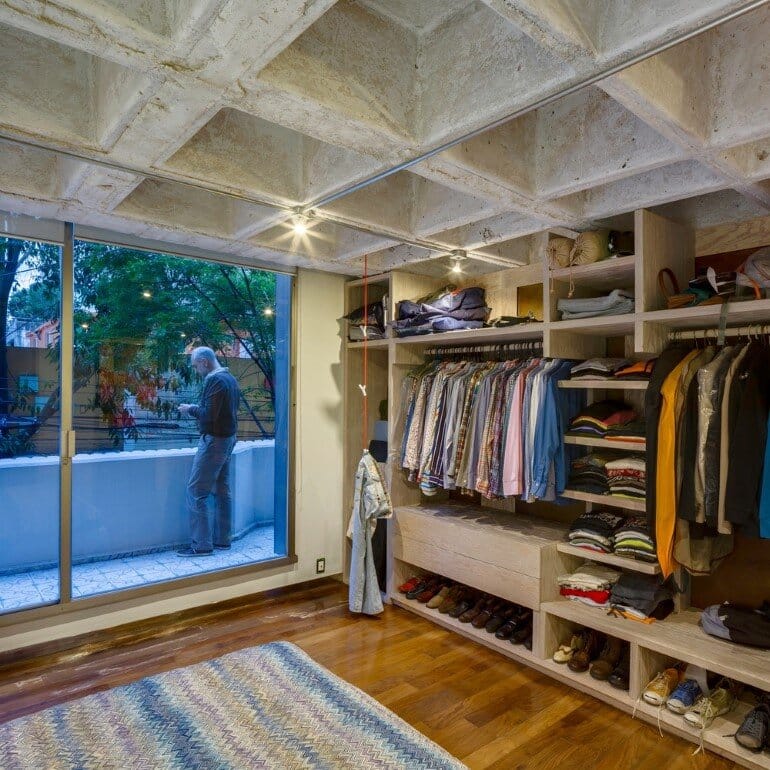
The project succeeds in finding a solution to the client’s brief: “I want a place where I can live and enjoy my lifestyle, a space that can revert to a conventional apartment should I ever want to sell it.”
Thank you for reading this article!

